Residence beyond the Earth: How many space stations are in orbit?
21st Jul 2022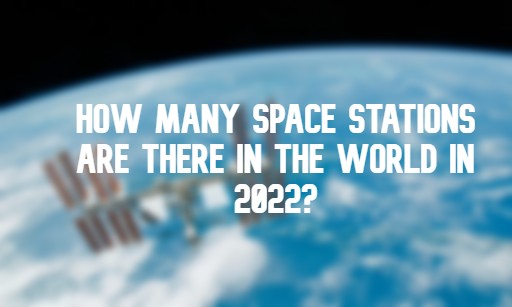
A space (orbital) station is a multifunctional spacecraft, specially equipped for a prolonged stay of people on board. In addition to life support systems, it is usually equipped with various tools for research and tests. The creation and operation of space stations cost billions of dollars, but their practical value is much higher. With their help, we can observe the Sun and other astronomical objects, perform military and weather reconnaissance, investigate the behaviour of materials and biological systems in microgravity environments, and much more. In other words, it’s not just a very expensive residence beyond Earth but an important research centre helping mankind to evolve. So, how many space stations are there in space?
How many space stations were created by mankind throughout history?
Let’s find out what space stations have ever been created in the world, how many space stations are there in orbit nowadays, and what new projects await launch.
Salut (1971-1982)
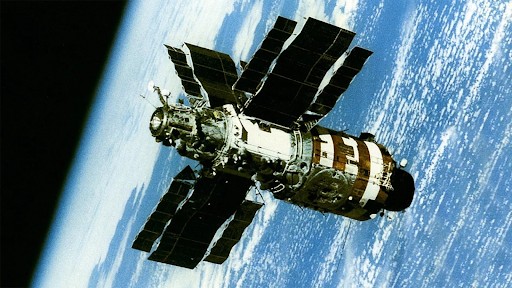
The first manned space station put into orbit belonged to the Soviet Union. The 18-ton Salyut-1 apparatus was a modification of one of the gliders created as part of the top-secret Soviet military program Almaz, and consisted of five components: a transitional, main, two auxiliary compartments and the Orion-1 space observatory.
Salyut-1 was launched to LEO on 19th April 1971, using a Proton-K rocket. Three days later, the Soyuz-10 manned mission departed for the station. After 24 hours, the astronauts managed to dock the spacecraft, but they were unable to open the hatch and were forced to return home without ever reaching the station.
On 7th June 1971, the crew of the Soyuz-11 spacecraft successfully docked with Salyut and transferred to the station to conduct the necessary experiments. The mission lasted 23 days but was aborted due to a fire in the wiring. When approaching Earth, the safety valve failure caused spacecraft depressurization. Since at that time the Soviet astronauts did not wear spacesuits on vehicles, the entire crew died of asphyxia. After this tragedy, the Salyut-1 mission was terminated, and on 11th October 1971, after 175 days in orbit, the station burned down upon entering the Earth’s atmosphere. Up to this day, The Soyuz 11 cosmonauts are the only astronauts who died above the Kármán line.
Over the next 10 years, the Soviets undertook five more launches of manned stations under the Salyut program. The last two spacecraft, Salut 6 and Salut 7, have been significantly upgraded. They had more solar panels, a second docking port, and an additional internal volume to increase the astronauts’ endurance and demonstrate the theoretical possibility of a flight to Mars. Salyut-6 spent 1,764 days in orbit, 683 of which were with astronauts on board.
Salyut 7 performed even better. It stayed in orbit for 3216 days, 816 of them with a crew. During its operation, 12 Progress automatic cargo ships, 11 Soyuz T manned spacecraft flew to the station, and 21 astronauts visited it (some flew 2-3 times), including the first astronauts from France (Jean-Loup Chretien) and India (Rakesh Sharma). The astronauts carried out 13 spacewalks from the Salyut-7 station, with a total duration of 48 hours and 33 minutes.
Skylab (1973-1979)
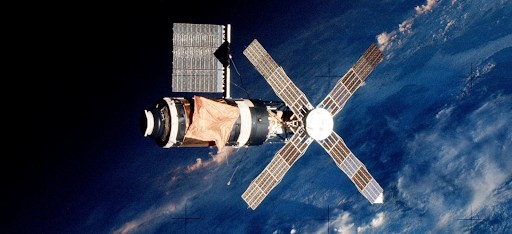
In the early 70s, the Americans were still too busy with the Apollo lunar program, so they lost the lead in launching the space station to the USSR. However, the last three Apollo missions (18, 19, and 20) were cancelled due to high cost and lack of scientific value, leaving the US with three extra Saturn rockets that needed to be used somehow. That is how Skylab came to life. US space station launched on 14th May 1973, two years after Russian Salyut 1. But it was immediately superior to Salyut 7, which the USSR launched only 9 years later.
Skylab had much larger dimensions and almost 4 times the internal volume than Salyut 7 (352 cubic meters versus 83). There was a shower and a dedicated toilet, and each astronaut had a small separate cabin compartment — a niche with a closing curtain, a berth, and a box for personal belongings.
Skylab worked in orbit for 6 years, taking on board three expeditions that departed on Apollo spacecraft. After 1974, the Saturn 5 rockets, the only ones capable of serving the Apollo missions, were discontinued and flights to Skylab ceased. The station gradually began to deorbit as it did not have its own engines and the orbit was corrected using the Apollo engines. The United States considered the possibility of preserving Skylab with Space Shuttle expeditions, but the final decision on funding was never made. On 11th July 1979, the station deorbited and crashed into western Australia. Some of its fragments are still exhibited in museums.
MIR (1986-2001)
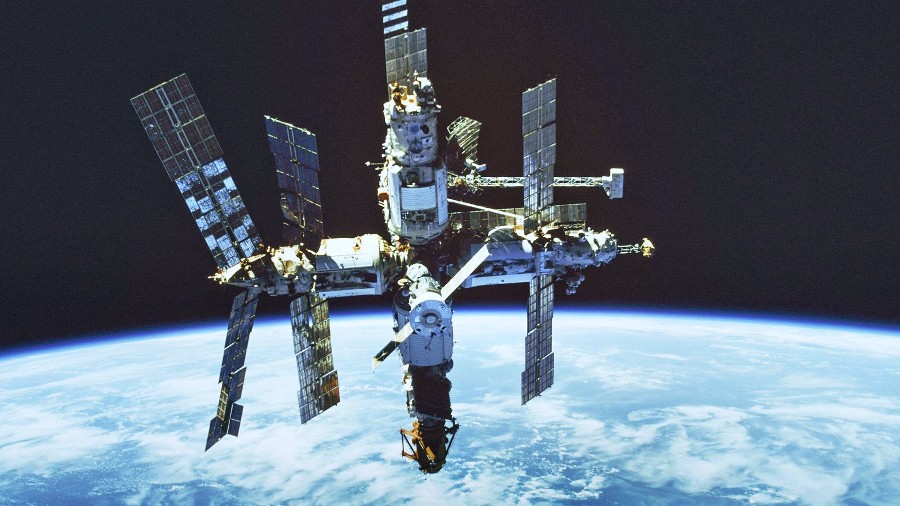
In 1986, the USSR launched a new Mir station. It had few structural differences from Salyut stations and was even based on their design. Nevertheless, Mir set a 20th-century record for the operation duration. It spent 5511 days in orbit, 4594 of which were crewed. The station was visited by 104 astronauts from twelve states as part of 28 expeditions, more than 23,000 experiments were carried out, and 29 cosmonauts and 6 astronauts went into open space.
Despite the impressive statistics, the wear and tear of the equipment and the lack of funds for its modernisation forced Russia to abandon the further exploitation of Mir in 2001. Interestingly, the Hollywood science fiction film Armageddon, filmed three years earlier, showed the Russian station in a deplorable state. At the time, many considered this an exaggeration, a kind of mockery of the main US competitor, but the Armageddon directors were not far from the truth. On 23rd March 2001, the Mir station left orbit and sank into the Pacific Ocean after collapsing in the Earth’s atmosphere.
Is there a Russian space station in orbit now? No. The examples of Salut, Skylab, and Mir proved that it is unreasonably expensive to develop and maintain such projects alone. It’s easier to join forces and create an International Space Station. And such a project appeared.
International Space Station (ISS) ( 1998 – nowadays)
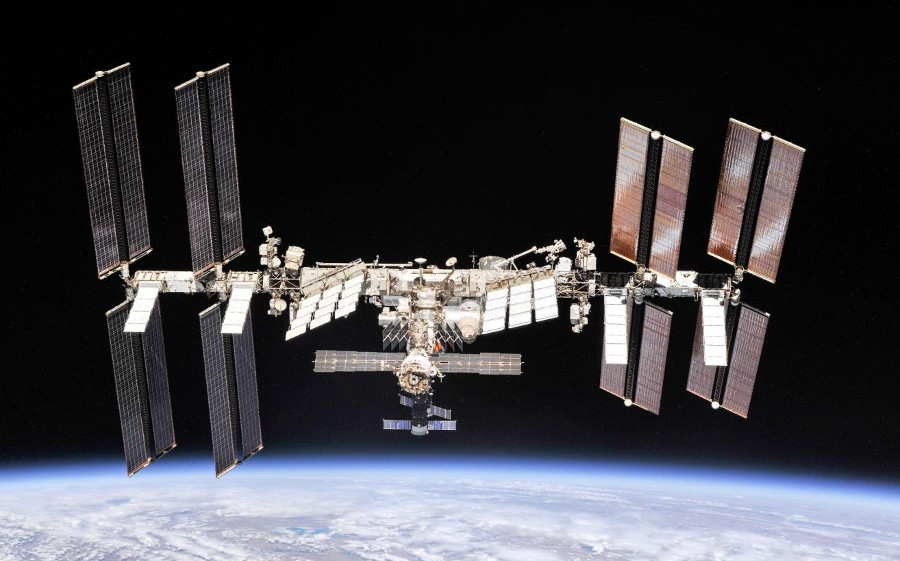
The International Space Station (ISS) became operational in 1998. Five space agencies — USA, Russia, Japan, Canada, and 8 European countries that are part of the European Space Agency — took part in its creation. A giant spacecraft weighing 440 tons, measuring 107x24x75, and with a habitable volume of almost 400 cubic meters is included in the Guinness Book of Records as the most expensive object built by man, with a total cost of over 150 billion dollars. The station contains 15 modules: 2 cargo, 2 research, 4 laboratories, 3 residential, as well as service, survey, connection, and gateway.
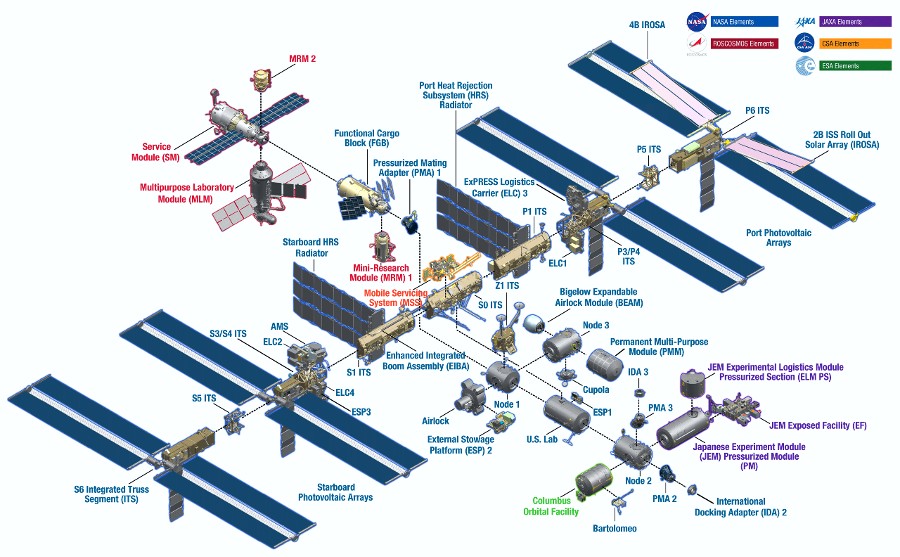
During the operation, which is still ongoing, 247 missions of cargo and manned spacecraft were completed on the ISS: Soyuz, Progress (Roscosmos), Space Shuttle, Cygnus (NASA), Crew Dragon, Cargo Dragon (Space X, NASA), HTV (JAXA), ATV (ESA). To date, the ISS has already changed 63 shifts. The crew of the Soyuz MC 18 spacecraft spent the longest time at the station in 2021-2022. Their expedition lasted for 355 days and 3 hours.
Which country has its own space station?
Of all the leading space countries, only two do not participate in the ISS mission – India and China. But if the former only dreams of launching its own space station by 2030, the latter has had its own for 10 years now.
Tiangong
The first Chinese station Tiangong-1 (Chinese for Heavenly Palace) was deployed in orbit in 2011. It was a target module, similar in size to Salyut, designed to test rendezvous and docking technologies for the Shenzhou spacecraft. The station worked for 6 years and 184 days, after which communication with it was lost. From 2011 to 2013, Tiangong-1 received three missions, one unmanned test and two manned missions.
In September 2016, China launched Tiangong-2, which became a test model for life support technologies for China’s future multi-module orbital station. In 2019, Tiangong-2 completed its work, made a controlled deorbit, and broke up in the dense layers of the atmosphere over the South Pacific Ocean, between New Zealand and Chile. For the entire period of operation, it was inhabited for only 30 days.
The third version of Tiangong was launched in April 2021. The final module docked at China’s Tiangong space station on 31st October, 2022. Moreover, the country is already considering adding modules to its completed Tiangong space station complex, according to a senior space official. Also, China is planning to set to launch an optical telescope module named Xuntian in 2024. It’ll co-orbit with Tiangong.
How many space stations are there in 2022?
So, how many space stations are in orbit? At the moment, there are 2 active space stations in Earth orbit — ISS and CSS. The first one will expire in 2024, but last year the United States, as the majority owner, announced that it was going to extend it until 2030.
The lifetime of the ISS has been extended several times, but it’s widely agreed that extending it far beyond 2030 would be risky. So, most likely, the space station will be de-orbited in 2031, bringing it through the atmosphere to safely splash down in the Pacific Ocean.
As far as CSS goes, it is at the beginning of operations and is expected to last 10-15 years. Does this mean that China may soon become a monopolist in orbit? Hardly. And that’s why.
Space stations of the future (both private and governmental)
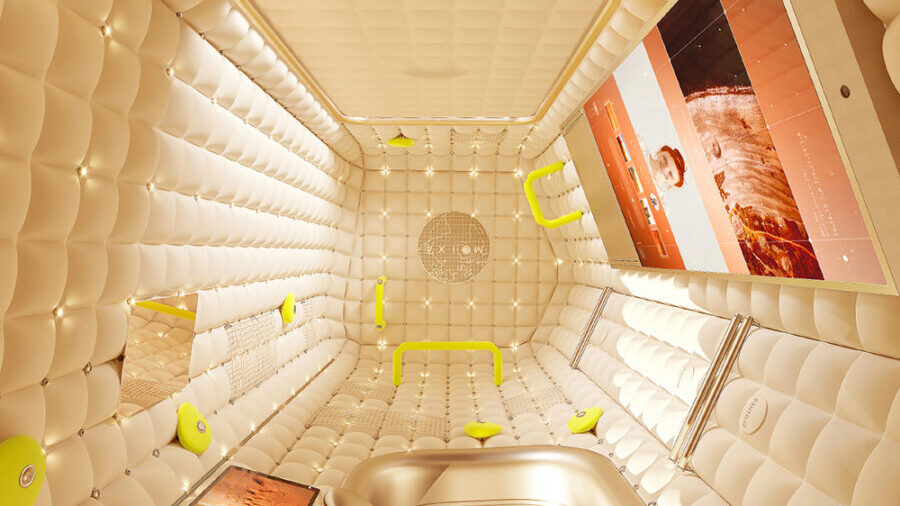
The reality is that modern technology allows one to create space stations for different missions and put them into different orbits. More importantly, the government agencies are not the only ones working on such projects, as more private players enter the market. Let’s take a look at four space station projects that are under development right now.
1. AxStation (USA)
More realistic tasks are set by Axiom Space, a private company from Houston. Its founder, former NASA ISS manager Michael Suffredini, plans to launch the first segment of a new commercial space station in just three years and turn it into a luxury hotel in orbit in the future. A $2 billion project called “AxStation” could be implemented as soon as 2028. The plan is to sequentially attach Axiom modules to the ISS and then detach them as a separate station.
Unlike Roscosmos and the Gateway Foundation, who are still only dreaming, Axiom Space is in full swing implementing its plan. On 8th April 2022, the company, together with SpaceX, sent its first 4 tourists on the AX-1 mission to the ISS. This successful journey lasted 15 days.
2. Voyager (USA)
In March 2021, an American startup The Gateway Foundation announced its plan to launch the first commercial Voyager space station by 2027. And because of the name, this project is easily confused with the spacecraft Voyager-1, the location of which we discussed earlier. According to the company’s plans, the insides of the station will look more like a luxurious hotel than a sterile spaceship: cosy cabins, bathrooms and toilets, exercise equipment, bars, and other familiar earthly amenities. Voyager will be able to simultaneously accommodate up to 280 guests and 112 crew members. The 50,000-square-metre structure, shaped like a Ferris wheel, will rotate slowly, creating a lunar-like gravity.
3. Orbital Reef (USA)
American companies Blue Origin and Sierra Space are working on their own space station called Orbital Reef. The multi-purpose business park, as Jeff Bezos has dubbed it, will have a usable volume of approximately 800 cubic metres and sit on a 500 km high LEO. Orbital Reef is scheduled to launch by 2030 and, given who is involved in this project, there is no doubt about its implementation.
4. ROSS (Russia)
In 2021, Roscosmos announced its intention to launch its own orbital station by 2026. It is known that ROSS (Russian Orbital Service Station) will operate in a sun-synchronous orbit at a height of 400 km, which will allow it to control the entire surface of the Earth, especially the Arctic region. Thanks to this location, the station will be able to perform two important functions: high-frequency observations of Russia from space and easier access to the station compared to the ISS, which will significantly expand the possibilities for conducting medical and physiological experiments compared to those that are currently available in the Russian segment of the ISS. Presumably, ROSS will consist of 7 modules, including a commercial module for the accommodation of four tourists.
5. Haven-1 (USA)
California-based startup Vast Space plans to launch the first-ever private space station, Haven-1, on a SpaceX Falcon 9 rocket in August 2025. Vast Space plans to operate a “100-metre-long multi-module spinning artificial gravity space station” eventually. The company is also selling up to four seats on Vast-1, which will launch after Haven-1. SpaceX will provide astronaut training, spacesuits, and other services for the mission. Haven-1 will eventually become a module incorporated into a larger space station. Vast Space’s goal is to launch much larger, artificial gravity space stations in Earth orbit and beyond.
In general, everything is clear with orbital stations, but what do we have on the Moon?
How many space stations are on the Moon?
None. NASA landed on the moon five times from 1969 to 1972, but the matter did not go beyond short astronaut walks not far from the ship. The technology at the time did not allow for more. In 2019, NASA announced the launch of the new Artemis lunar program, which plans to colonise the moon and build a permanent lunar base for future flights to Mars. Such a grand construction will require a lot of materials, and they will somehow have to be delivered to the Moon’s surface. So, the first stage for resupply missions will be the creation of the Gateway Lunar Orbital Station. It is planned to be commissioned after 2024.
This and other ambitious projects are still in the future, so for now, let’s glance back to the present and sum up what we already have.
List of Manned Space Stations (1971-2022)
So, how many manned space stations are there in total? More importantly, how many active space stations are there?
| Name | Crewsize | Launch date | Daysin orbit | Days occupied | Total crewand visitors | Pressurizedvolume | State |
| Salyut 1 | 3 | 19 April 1971 | 175 | 24 | 6 | 100 m3 (3,500 cu ft) | Out of service |
| Skylab | 3 | 14 May 1973 | 2249 | 171 | 9 | 360 m3 (12,700 cu ft) | Out of service |
| Salyut 3 | 2 | 25 May 1974 | 213 | 15 | 2 | 90 m3 (3,200 cu ft) | Out of service |
| Salyut 4 | 2 | 26 December 1974 | 770 | 92 | 4 | 90 m3 (3,200 cu ft) | Out of service |
| Salyut 5 | 2 | 22 June 1976 | 412 | 67 | 4 | 100 m3 (3,500 cu ft) | Out of service |
| Salyut 6 | 2 | 29 September 1977 | 1764 | 683 | 33 | 90 m3 (3,200 cu ft) | Out of service |
| Salyut 7 | 3 | 19 April 1982 | 3216 | 861 | 22 | 90 m3 (3,200 cu ft) | Out of service |
| Mir | 3 | 19 February 1986 | 5511 | 4594 | 125 | 350 m3 (12,400 cu ft) | Out of service |
| Tiangong-1 | 3 | 29 September 2011 | 2377 | 22 | 6 | 15 m3 (530 cu ft) | Out of service |
| Tiangong-2 | 2 | 15 September 2016 | 1037 | 29 | 2 | 15 m3 (530 cu ft) | Out of service |
| ISS | 7 | 20 November 1998 | 8626 | 7915 | 230 | 915.6 m3 (32,300 cu ft) | Operational |
| Tiangong Space Station | 3-6 | 29 April 2021 | 430 | 300 | 9 | 110 m3 (3,880 cu ft) | Operational |
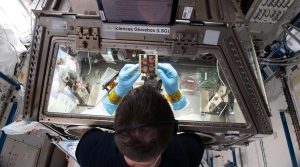


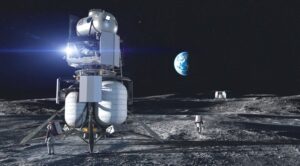


Thank you for your comment! It will be visible on the site after moderation.